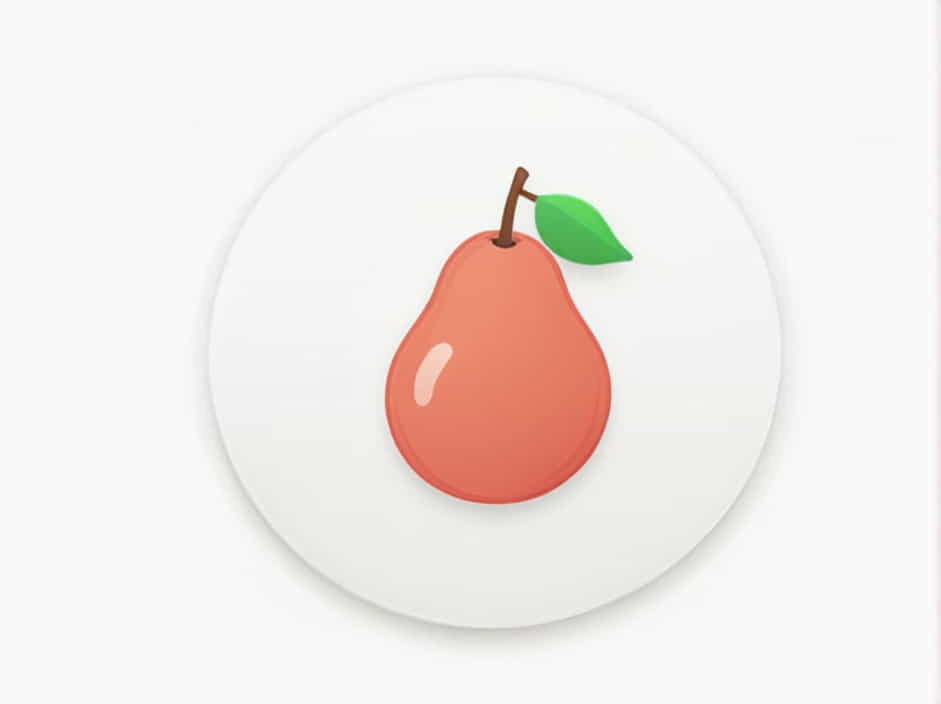Have you ever wondered how fruits develop? In botanical terms, a fruit is a ripened ovary that forms after fertilization in flowering plants. This transformation plays a crucial role in plant reproduction by protecting seeds and aiding in their dispersal.
Understanding how a fruit develops from an ovary helps us appreciate the diversity of fruits we eat daily, from apples and oranges to tomatoes and cucumbers. This topic explores the process of fruit formation, types of fruits, and their importance in nature and human life.
1. What Is a Ripened Ovary?
A ripened ovary is the final stage of ovary development in flowering plants. After pollination and fertilization, the ovary of a flower matures into a fruit, enclosing the seeds inside.
A. The Role of the Ovary in Plants
- The ovary is part of the female reproductive organ (pistil) of a flower.
- It contains ovules, which develop into seeds after fertilization.
- Once fertilized, the ovary undergoes changes, leading to fruit formation.
B. The Connection Between Fruits and Ovaries
- In simple terms, fruits are matured ovaries that contain seeds.
- Different plant species produce various types of fruits depending on their reproductive strategies.
2. The Process of Fruit Formation
The transformation from a flower’s ovary to a fruit involves several stages:
A. Pollination: The First Step
- Pollination occurs when pollen grains from the male anther land on the female stigma.
- This process can be facilitated by wind, water, or pollinators like bees and butterflies.
B. Fertilization: The Trigger for Ovary Growth
- Once pollen reaches the ovary, it fertilizes the ovules, which later develop into seeds.
- The ovary begins to enlarge and change, marking the start of fruit development.
C. Growth and Ripening of the Fruit
-
Over time, the ovary walls thicken and develop into the fruit’s outer covering (pericarp).
-
The ripening process involves:
- Softening of the fruit
- Change in color
- Increase in sugar content
- Development of aroma and flavor
-
This process makes the fruit attractive to animals, which helps in seed dispersal.
3. Types of Fruits Based on Ovary Development
Fruits come in various forms, depending on how the ovary develops. They can be classified into three main types:
A. Simple Fruits (From a Single Ovary)
These fruits develop from a single ovary of a single flower. They can be:
-
Fleshy Fruits (retain moisture when mature):
- Berry – Tomato, grape, banana
- Drupe – Peach, cherry, mango
- Pome – Apple, pear
-
Dry Fruits (lose moisture when mature):
- Dehiscent (split open) – Peas, beans
- Indehiscent (do not split open) – Sunflower seeds, nuts
B. Aggregate Fruits (From Multiple Ovaries of One Flower)
- These fruits form when a single flower has multiple ovaries, each developing into a small fruit.
- Examples: Strawberry, raspberry, blackberry.
C. Multiple Fruits (From Ovaries of Many Flowers)
- These fruits develop when multiple flowers merge together, forming a single large fruit.
- Examples: Pineapple, fig, jackfruit.
4. The Importance of Fruits in Nature and Human Life
Fruits serve essential functions for plants, animals, and humans.
A. Role in Seed Dispersal
- Fruits help spread seeds through animals, wind, and water.
- When animals eat fruits, they often carry seeds to new locations, aiding plant reproduction.
B. Nutritional and Economic Importance
- Fruits provide vitamins, minerals, and fiber essential for human health.
- They are a major agricultural product, supporting economies worldwide.
C. Medicinal and Industrial Uses
- Many fruits contain antioxidants and bioactive compounds used in medicine.
- Fruits like coconuts and olives are valuable for their oils and industrial applications.
5. Examples of Common Fruits and Their Ripened Ovaries
Many everyday fruits are examples of ripened ovaries. Let’s look at a few:
A. Apple (Malus domestica)
- Derived from the ovary of a flower, classified as a pome fruit.
- The fleshy part develops from the flower’s receptacle, while the core encloses the seeds.
B. Tomato (Solanum lycopersicum)
- A berry fruit that develops from a single ovary.
- Often mistaken for a vegetable but botanically classified as a fruit.
C. Mango (Mangifera indica)
- A drupe fruit with a single seed enclosed in a hard pit.
- The outer flesh develops from the ovary wall, making it sweet and edible.
D. Coconut (Cocos nucifera)
- A drupe fruit with a fibrous outer husk.
- The seed inside is the edible part commonly used for food and oil.
E. Strawberries (Fragaria × ananassa)
- A unique aggregate fruit where the tiny seeds on the surface are the actual fruits (achenes).
6. Fun Facts About Fruits and Their Ovaries
Here are some interesting facts about fruits and their development:
- Bananas are berries, but strawberries are not! Botanically, berries must develop from a single ovary and contain seeds inside.
- Pineapples are made from many flowers that fuse together, making them a multiple fruit.
- Cucumbers and pumpkins are fruits, not vegetables, because they develop from ripened ovaries containing seeds.
- Avocados are large single-seeded berries, meaning they share similarities with tomatoes and grapes.
A fruit is a ripened ovary that develops after fertilization in flowering plants. This transformation is essential for seed protection and dispersal, ensuring the survival of plant species.
Fruits come in different forms, including simple, aggregate, and multiple fruits, each with unique characteristics. Their nutritional, economic, and ecological importance makes them a valuable part of life on Earth.
Next time you enjoy a delicious fruit, remember that you’re eating the ripened ovary of a flower—a fascinating part of nature’s reproductive cycle!
